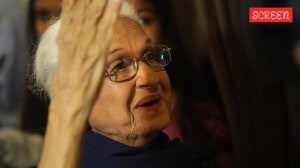Paediatricians say they know teenagers best, want to set up teen clinics
New Delhi, September 30: Adolescence is not just about acne but has the roots of most of the adult problems including depression and drug ...

New Delhi, September 30: Adolescence is not just about acne but has the roots of most of the adult problems including depression and drug abuse. These are problems which were tackled in the past by the beliefs and ideals inculcated by the family elders. Now with the families facing a vacuum within, the doc should come to the rescue of the troubled teenager, feel the medical fraternity. And among doctors it is the paediatricians who want to be the messiahs of adolescents.
And supporting the theme of adolecent care are agencies like World Health Organsation, UNICEF and the Family Welfare Ministry. While WHO and Unicef are funding workshops to sensitise paediatricians on adolescent health problems, the ministry is setting up a centre in Safdarjung Hospital here as a pilot project to address teen woes.
The first conference of the Indian Accademy of Paediatrics on adolecent care which opened here on Saturday in the presence of Delhi Health Minister A.K.Walia, Unicef representative Alan Court and officials of the Familiy Welfare ministry, also saw discussion on division of turf between paediatricians and general practitioners.
IAP president Swati Bhave said that with the rise in longevity, geriatric problems are to preoccupy the doctors to a great extent and hence teenagers were best left to the paediatricians. She also pointed out that adolescent paediatrics was a medical speciuality in the west and it should be developed so in India too.
She also pointed out that paediatricians are also in a better position to understand a teenager as they have the advantage of knowing the origin of various problems.
She said that the IAP would ask for setting up of adolescent clinics in every hospital but would precede this with training workshops for paediatricins at state, district and city levels so that adolescent problems are adequately understood. These workshops would be supported by Unicef, she said.
Dr P.D.Nayar a counsellor in life skill education and an advisor in WHO said that the adolescent clinics would indeed be an attempt to give the teenagers the guidance and the support that is often not available at home.
Each clinic would have a paediatrician, a psychiatrist, a gynaeclogist and counsellor, nayar said.
However some paediatricians felt that there was no urgent need for adolescent clinics as infant mortality and other paediatric problems were as pressing as ever and no where near control. “Besides adolescent care is moe an urban problem for rural families are still self sufficient,” said Daya Sharma, a paediatrician from Uttar Pradesh, adding that there was no harm in beginning the process of awareness creation among paediatricians.


- 01
- 02
- 03
- 04
- 05





























